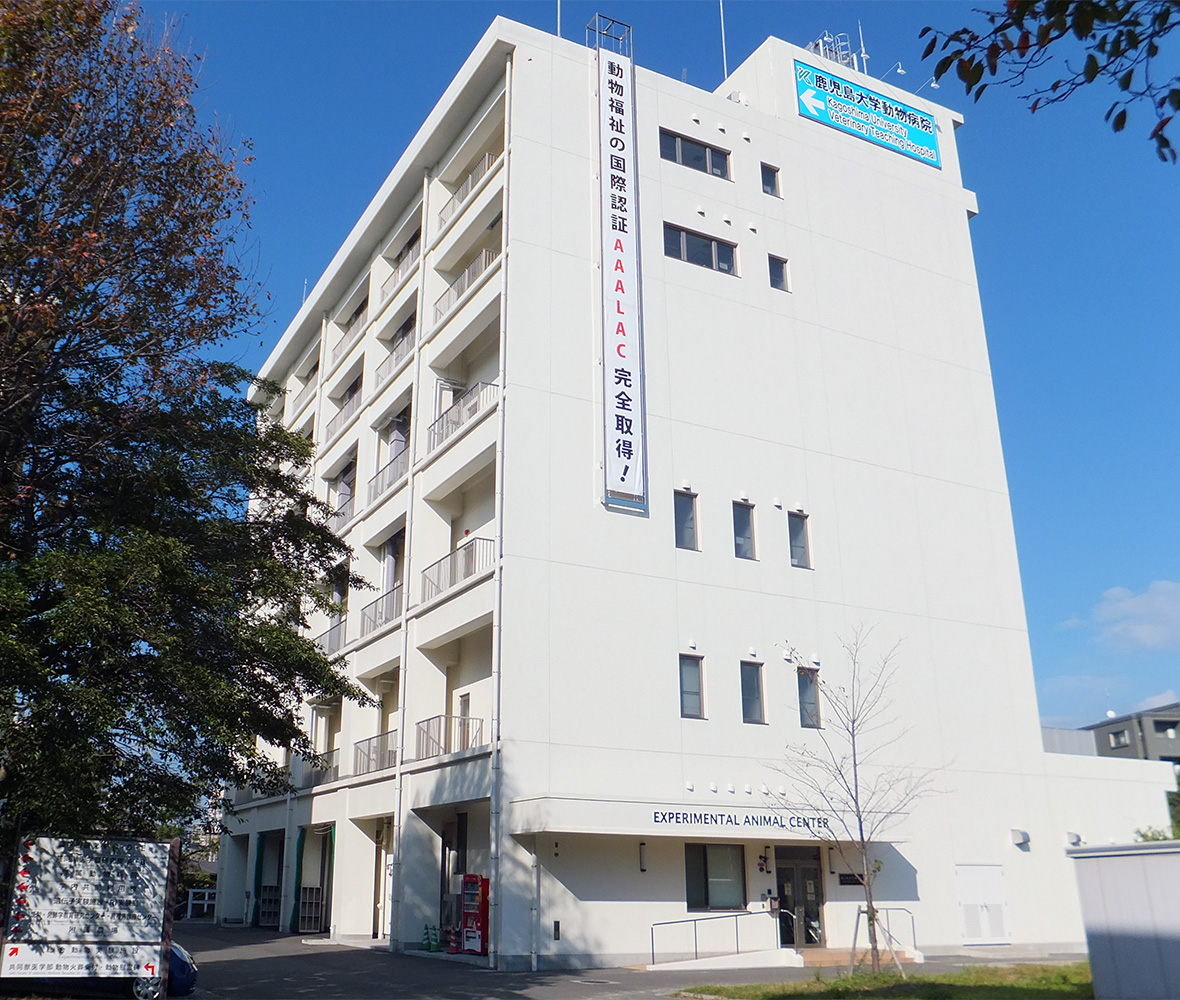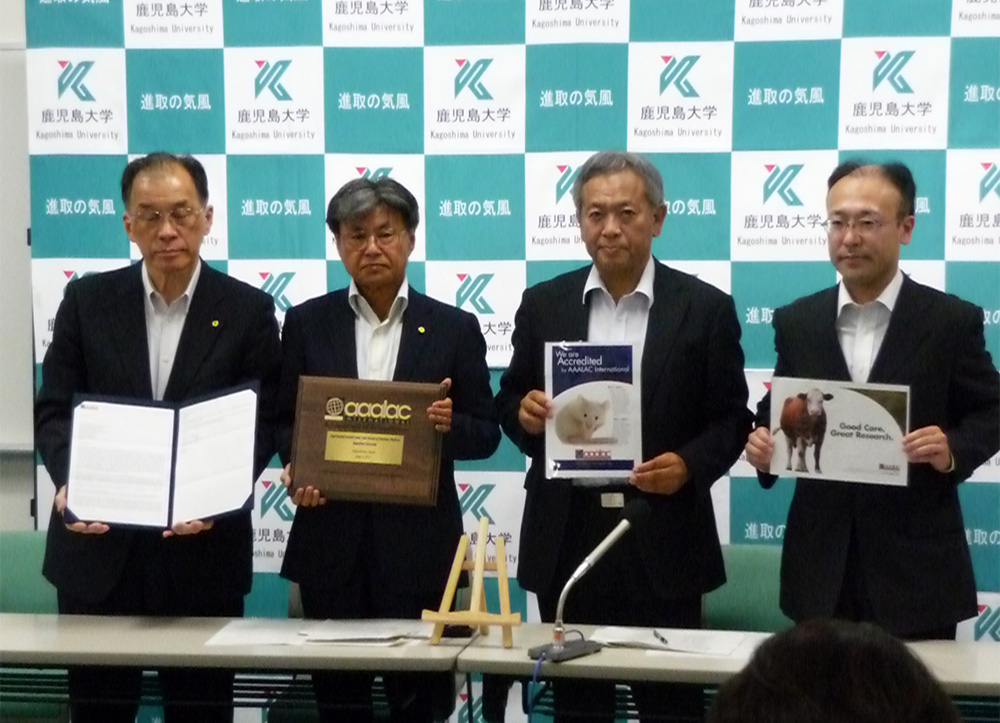ABOUT EAC
Background to the Experimental Animal Center
The veterinarian of today is required to manage infection and food safety risks accompanying the increased global movement of people, flora and fauna, and food products.
For veterinarians to be able to deal with these issues, they need to go through a training program that endows them with internationally transferable skills. To establish such a program, the Japanese Ministry of Education, Culture, Sports, Science and Technology took an initiative to set up collaborative veterinary education meeting global standards across the vet schools at four national universities through 2012 to 2019.
Kagoshima University’s Experimental Animal Center (EAC) was established as one part of that initiative, on September 1, 2015.
The EAC has a wide remit: the animals involved range from small laboratory animals to patients receiving veterinary treatment, and it enables education and research from basic concepts to clinical application.
The EAC’s Program for Animal Care and Use aims to ensure that such use is conducted in accordance with relevant global standards giving full consideration to animal welfare.





